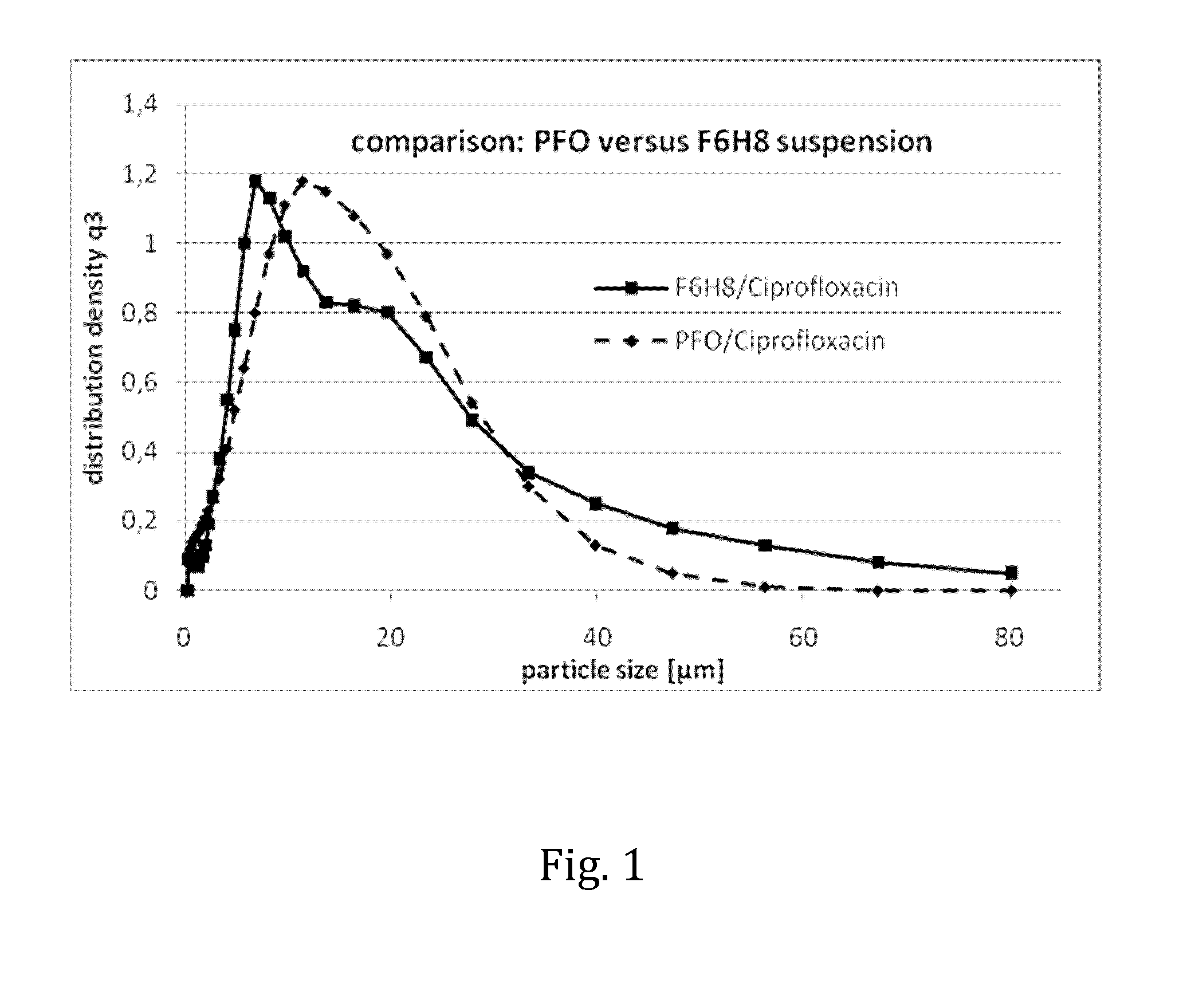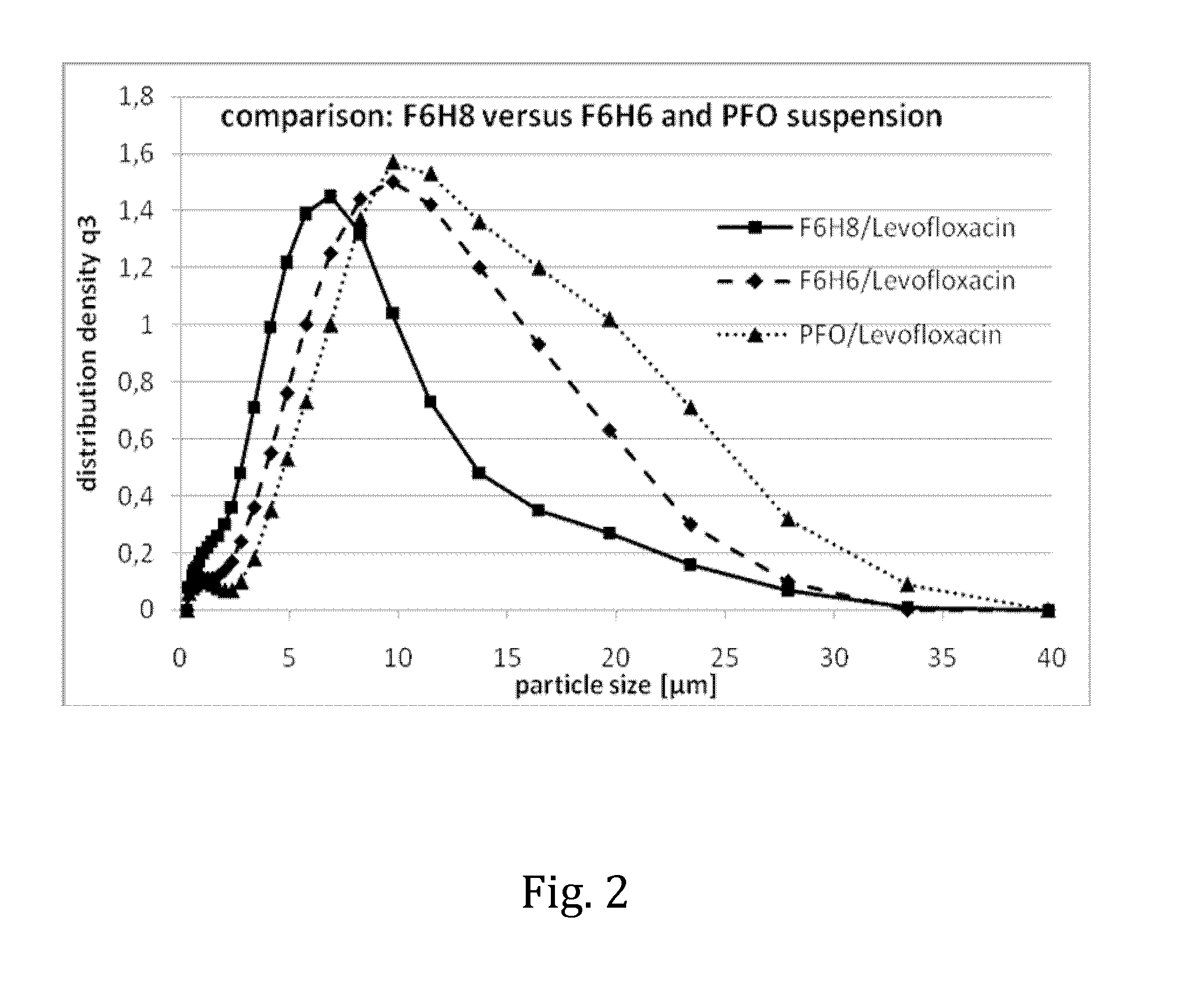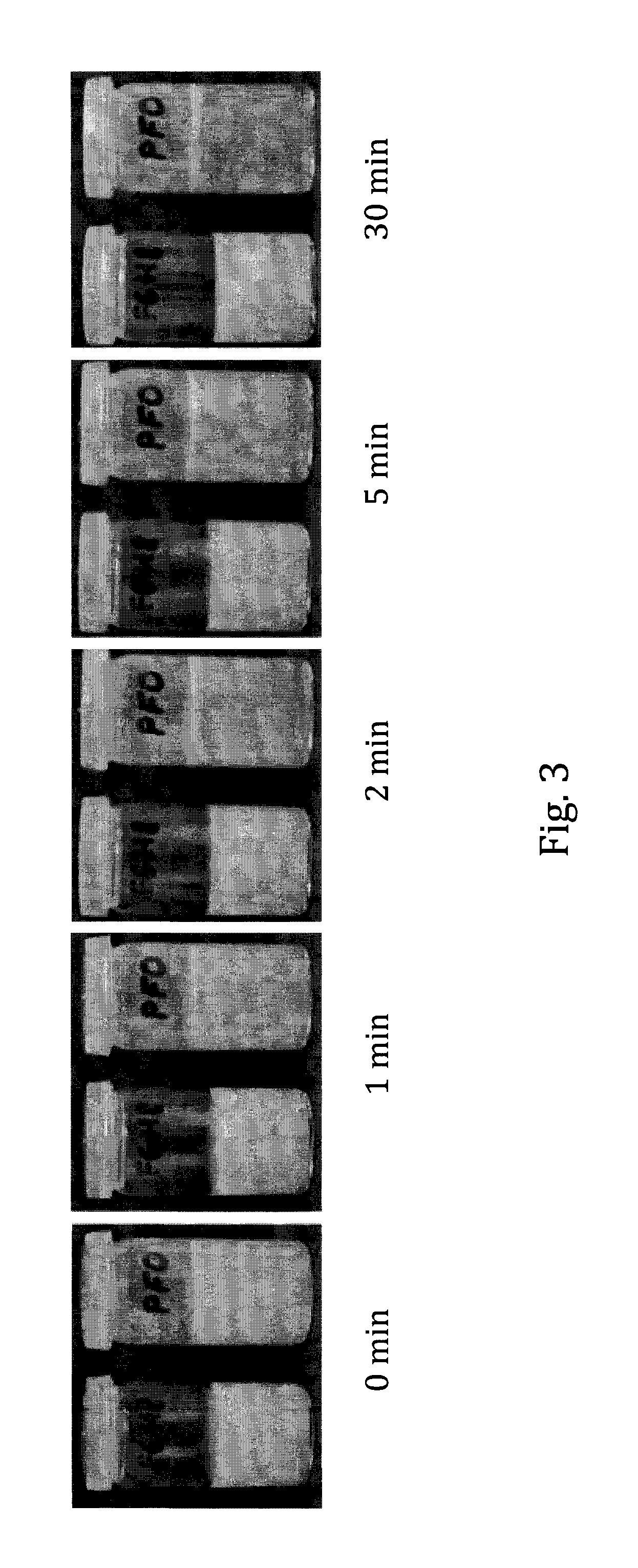Liquid pharmaceutical composition for the delivery of active ingredients
a technology of active ingredients and pharmaceutical compositions, applied in the direction of carbohydrate active ingredients, animal husbandry, biocide, etc., can solve the problems of difficult resuspension of aggregates thus formed, easy physical change of suspensions, and inability to achieve simple solutions, etc., to achieve the effect of convenient not to evaporate and better tolerability
- Summary
- Abstract
- Description
- Claims
- Application Information
AI Technical Summary
Benefits of technology
Problems solved by technology
Method used
Image
Examples
example 1
[0069]The droplet size of selected SFA's in terms of weight and volume of droplets from three droppers was determined and compared to that of purified water. The devices used for dispensing the droplets were (a) a 2 mL Pasteur pipette (wall thickness 0.53 mm; external tip diameter: 1.50 mm; length: 150 mm) made of glass, (b) a 20 G (0.9 mm×50 mm) injection needle, and (c) a dropper from a commercial eye drops product (Hylo-Vision). The droplet weights were measured at 25° C. using a laboratory balance; the volumes were calculated. Each test was performed 10 times. The results of the experiments (mean values of droplet sizes and standard deviations) are shown in table 2.
TABLE 2Glass pipetteInjection needleEye dropperMaterialmgμLmgμLmgμLWater31.2 ± 1.4 31.3 ± 1.4 11.0 ± 0.9 11.1 ± 0.9 36.0 ± 2.236.1 ± 2.2F4H56.0 ± 0.44.7 ± 0.32.6 ± 0.42.0 ± 0.312.4 ± 0.2 9.6 ± 0.2F6H86.6 ± 0.65.0 ± 0.43.4 ± 0.22.5 ± 0.113.7 ± 0.410.3 ± 0.3
[0070]Table 2 shows that droplets of F4H5 and F6H8 are dramatic...
example 2
[0071]The physiological tolerability of F4H5 and of a mixture of 1 wt.-% ethanol in F4H5 was evaluated in an ex-vivo eye irritation test (EVEIT) using rabbit eyes taken from freshly sacrificed animals. The eyes were fastened in chambers coupled micropump systems which continuously supplied the eyes with cultivation medium (Minimal Essential Medium, MEM T031-05) without fetal calf serum. The vitality of the eyes was monitored by regularly measuring the concentration of lactate and glucose in the chamber eluate. The corneal surface of the eyes was damaged by abrasion, using a dental ceramic abrasive (638XF, Meisinger). For each eye, four lesions of 3.0 to 4.5 mm2 were prepared.
[0072]To evaluate the effect of F4H5 and F4H5 with 1 wt.-% ethanol on the cornea, an amount of approx. 0.25 to 0.50 μl of the respective test substance was dropped onto the centre of a cornea once every hour over a period of 12 hours, followed by a 12 hour resting period in which the cornea was submersed in cult...
example 3
[0076]In a similar set of experiments as described in Example 2, the physiological tolerability of F6H8 and of a mixture of 1.0 wt.-% ethanol in F6H8 were evaluated in an ex-vivo eye irritation test (EVEIT). Again, minimal essential medium (MEM) was included as negative control, benzalkonium chloride solution (0.01%) as positive control, and hyaluronic acid solution (0.1%) as a reference.
[0077]In result, control treatment with MEM lead to a complete remission of the abrasions (starting size: 14.14 mm2) within 2 days, whereas the treatment with BAC increased the lesions from 11.23 mm2 to a complete epithelial loss affecting all of the corneal surface. In the case of hyaluronic acid, the area of corneal damage started with 12.16 mm2 and was reduced within 3 days to only 0.32 mm2 in a first set of experiments, representing a reduction by 97.4%. In a second set, complete healing was achieved with this reference compound. In two separate sets for each test, both F6H8 as well as the mixtu...
PUM
| Property | Measurement | Unit |
|---|---|---|
| size | aaaaa | aaaaa |
| volume mean diameter | aaaaa | aaaaa |
| refractive index | aaaaa | aaaaa |
Abstract
Description
Claims
Application Information
 Login to View More
Login to View More - R&D
- Intellectual Property
- Life Sciences
- Materials
- Tech Scout
- Unparalleled Data Quality
- Higher Quality Content
- 60% Fewer Hallucinations
Browse by: Latest US Patents, China's latest patents, Technical Efficacy Thesaurus, Application Domain, Technology Topic, Popular Technical Reports.
© 2025 PatSnap. All rights reserved.Legal|Privacy policy|Modern Slavery Act Transparency Statement|Sitemap|About US| Contact US: help@patsnap.com



